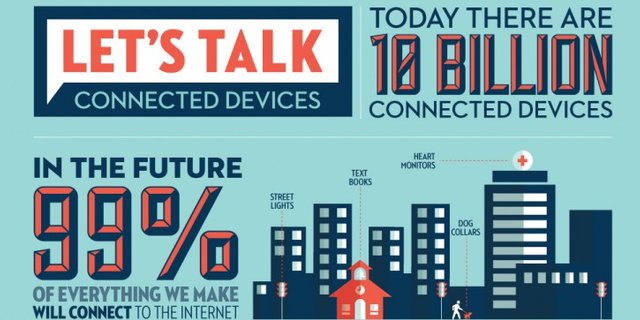INTERNET OF THINGS (IOT)

The Internet of things (IoT) is the network of physical devices, vehicles, and other itemsembedded with electronics, software,sensors, actuators, and network connectivitywhich enable these objects to collect and exchange data.[1][2][3] Each thing is uniquely identifiable through its embedded computing system but is able to interoperate within the existing Internet infrastructure. Experts estimate that the IoT will consist of about 30 billion objects by 2020.[4]
The IoT allows objects to be sensed or controlled remotely across existing network infrastructure,[5] creating opportunities for more direct integration of the physical world into computer-based systems, and resulting in improved efficiency, accuracy and economic benefit in addition to reduced human intervention.[6][7][8][9] When IoT is augmented with sensors and actuators, the technology becomes an instance of the more general class of cyber-physical systems, which also encompasses technologies such as smart grids, virtual power plants, smart homes,intelligent transportation and smart cities.
"Things", in the IoT sense, can refer to a wide variety of devices such as heart monitoring implants, biochip transponders on farm animals, cameras streaming live feeds of wild animals in coastal waters,[10] automobiles with built-in sensors, DNA analysis devices for environmental/food/pathogen monitoring,[11]or field operation devices that assist firefighters in search and rescueoperations.[12] Legal scholars suggest regarding "things" as an "inextricable mixture of hardware, software, data and service".[13]
These devices collect useful data with the help of various existing technologies and then autonomously flow the data between other devices.[14] The quick expansion of Internet-connected objects is also expected to generate large amounts of data from diverse locations, with the consequent necessity for quick aggregation of the data, and an increase in the need to index, store, and process such data more effectively.
The term "the Internet of things" was coined by Kevin Ashton of Procter & Gamble, later MIT's Auto-ID Center, in 1999.[15]
Hi! I am a robot. I just upvoted you! I found similar content that readers might be interested in:
https://en.wikipedia.org/wiki/Internet_of_Things
This post was randomly resteemed by @funaddaa!
Congratulations @dadoo! You have received a personal award!
Click on the badge to view your Board of Honor.
Do not miss the last post from @steemitboard:
Congratulations @dadoo! You received a personal award!
You can view your badges on your Steem Board and compare to others on the Steem Ranking
Do not miss the last post from @steemitboard:
Vote for @Steemitboard as a witness to get one more award and increased upvotes!